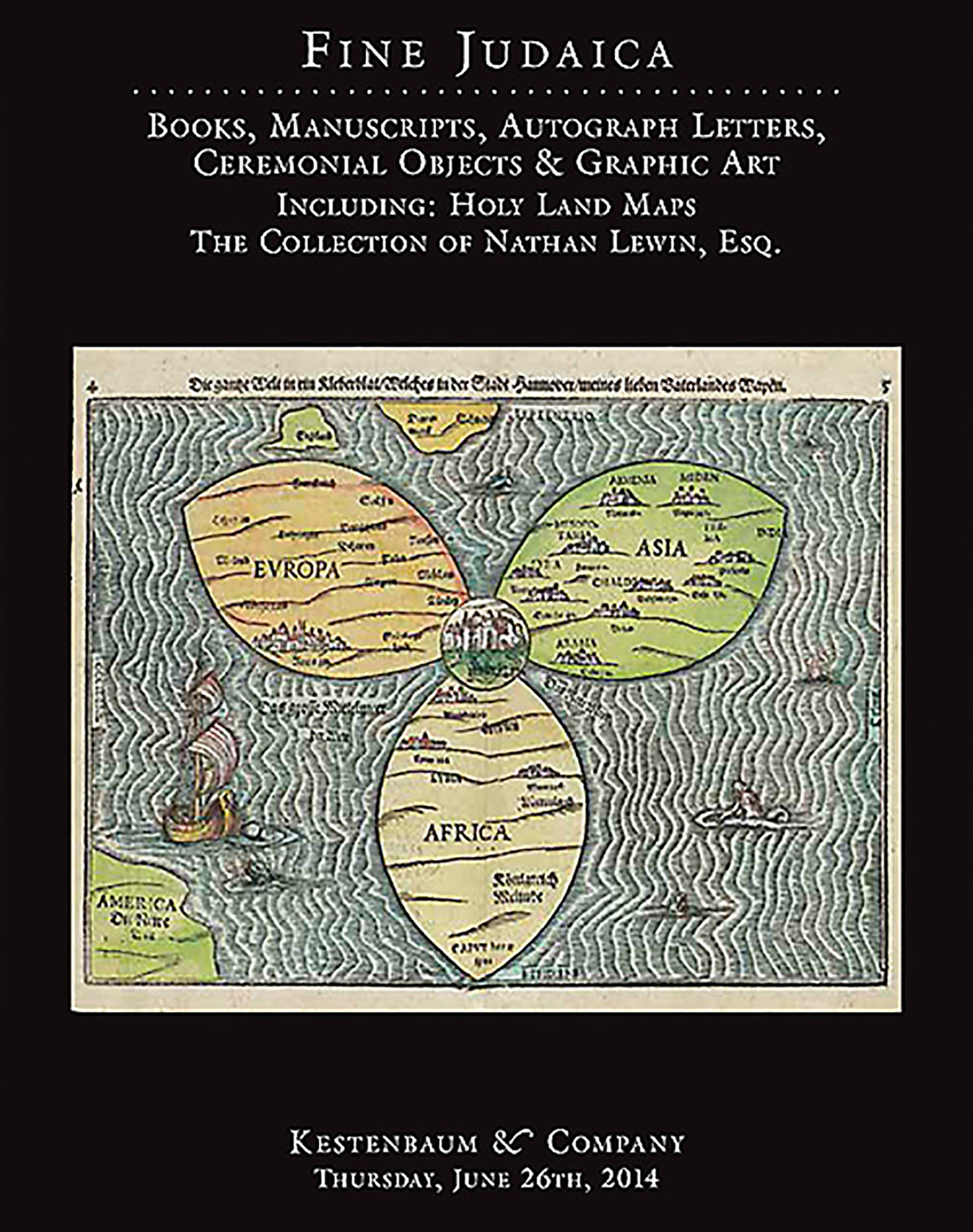Der Oberburgermeister der Stadt Litzmannstadt. Straßenbezeichnung in Ghetto [street renaming in the Lodz Ghetto.]

AUCTION 62 |
Thursday, June 26th,
2014 at 1:00
Fine Judaica: Books, Manuscripts, Autograph Letters, Graphic and Ceremonial Art
Lot 184
(HOLOCAUST).
Der Oberburgermeister der Stadt Litzmannstadt. Straßenbezeichnung in Ghetto [street renaming in the Lodz Ghetto.]
Lodz: July-August, 1941
Est: $1,500 - $2,500
PRICE REALIZED $3,250
When German forces occupied the large central Polish city of Lodz in September 1939, the city had a population of 672,000, over one-third of whom were Jews. The Reich annexed Lodz directly into the Warthegau region and renamed the city Litzmannstadt in honor of a German general, Karl Litzmann, who had led German forces in the area in 1914. It intended to “purify” the city and make it more Aryan - the Jewish population was to be expelled and the Polish population was to be reduced significantly and transformed into a slave labor force for Germany.
In time, the Lodz Ghetto grew to become the second-largest ghetto (following Warsaw) established for Jews in German-occupied Poland. Originally intended as a temporary gathering point for Jews, the ghetto was transformed into a major industrial center, manufacturing much needed supplies for Nazi Germany, especially for the German Army. Because of its remarkable productivity, the ghetto managed to survive through until the summer of 1944 and was the last ghetto in Poland to be liquidated. A total of 204,000 Jews passed through the ghetto, 800 remained when the liberating Soviets arrived, and some 10,000 survived the war in hiding in the surrounding areas The vast majority were transported to Auschwitz and Chełmno and subsequently killed.
In regard to the wartime transformation by the occupying Nazi forces of the Polish city of Lodz into the German city of Litzmannstadt: Central to the process of Germanizing the city was the segregation and removal of the large pre-war Jewish community which was to have no future in a city that was to be reshaped into a German city peopled by ethnic Germans.
This folder documents one of the ways in which the Nazi state radically restructured the city’s infrastructure and demography as a way to exclude the city’s large Jewish population. All street in the Ghetto were no longer permitted to carry German names, only letters and numbers. This is in line with chief Nazi administrator of the Lodz Ghetto Hans Biebow’s orders to Wilhelm Hallbauer, to bring a semblance of social and architectural modernity to a Polish city that the Germans regarded as backward and ‘infested’ with Jews. Hallbauer’s role in creating a Nazi showplace of a city was primarily to usher Lodz through the “grand scheme of historic population changes” – first the isolation, and finally the destruction, of its entire Jewish population. See J. Horowitz, Ghettostadt: Lodz and the Making of a Nazi City (2008).
